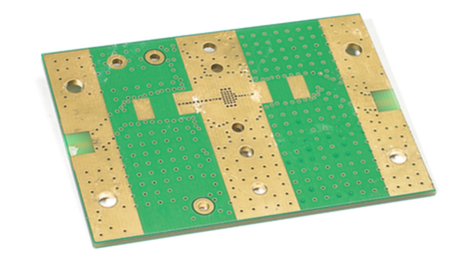How to Quickly Analyze PCB Design Risk Issues
Introduction
Printed Circuit Board (PCB) design is a complex process that involves numerous technical considerations and potential pitfalls. Identifying and mitigating risks early in the design phase can save significant time, money, and frustration during manufacturing and product deployment. This article provides a comprehensive methodology for quickly analyzing PCB design risk issues, offering engineers and designers a systematic approach to identify potential problems before they escalate into costly failures.
1. Understanding Common PCB Design Risks
Before analyzing risks, it’s essential to understand the most common categories of PCB design problems:
1.1 Electrical Performance Risks
- Signal integrity issues (crosstalk, reflections, EMI)
- Power integrity problems (voltage drops, noise)
- Improper impedance control
- Inadequate current carrying capacity
1.2 Manufacturing Risks
- Design for Manufacturability (DFM) violations
- Component placement too close to board edges
- Insufficient clearance for automated assembly
- Inadequate thermal relief for high-current traces
1.3 Thermal Management Risks
- Insufficient heat dissipation
- Hot spots near temperature-sensitive components
- Inadequate copper pour for heat distribution
1.4 Mechanical Risks
- Component interference with enclosures
- Stress points near connectors
- Vibration susceptibility
- Improper mounting hole placement
1.5 Reliability Risks
- Marginal operating conditions
- Insufficient derating of components
- Environmental factor considerations (humidity, temperature extremes)

2. Rapid Risk Assessment Methodology
2.1 Schematic-Level Analysis
Begin risk assessment at the schematic stage before PCB layout begins:
Component Selection Analysis:
- Verify all components are active (not obsolete or NRND)
- Check for single-source components
- Confirm adequate supply chain availability
- Validate operating temperature ranges match application requirements
Circuit Analysis:
- Perform basic SPICE simulations for critical circuits
- Check for proper decoupling capacitor placement
- Verify voltage ratings have sufficient margin
- Confirm current limits are properly implemented
Signal Classification:
- Identify high-speed signals (require controlled impedance)
- Flag sensitive analog signals
- Note high-current paths
- Mark critical timing signals
2.2 Layout Review Process
Once the schematic is validated, focus on the PCB layout:
Design Rule Check (DRC):
- Run automated DRC with appropriate rules for your manufacturer
- Pay special attention to:
- Minimum trace width/spacing
- Drill-to-copper clearance
- Solder mask expansion
- Silkscreen overlap
Visual Inspection Checklist:
- Component placement:
- Adequate spacing for rework/repair
- Proper orientation for automated assembly
- Grouping by function (analog/digital/power)
- Routing:
- High-speed signals have continuous reference planes
- Critical signals have shortest paths
- Avoid sharp angles (45° or curved preferred)
- Proper via usage (size, quantity)
- Power distribution:
- Adequate copper for current requirements
- Proper star-point grounding where needed
- Decoupling capacitors placed close to ICs
- Thermal considerations:
- Heat-generating components properly spaced
- Thermal vias under high-power devices
- Adequate copper area for heat dissipation
2.3 Advanced Analysis Techniques
For more complex designs, employ these methods:
Signal Integrity Simulation:
- Use tools like HyperLynx or Sigrity to:
- Analyze transmission line effects
- Identify potential crosstalk issues
- Verify signal quality at receivers
Power Integrity Analysis:
- Simulate power distribution network (PDN)
- Identify potential voltage drop issues
- Verify decoupling network effectiveness
Thermal Analysis:
- Use thermal modeling software
- Identify hot spots
- Verify component temperatures stay within limits
EMI/EMC Prediction:
- Analyze potential radiation sources
- Identify susceptible circuits
- Verify shielding effectiveness

3. Risk Prioritization Framework
Not all risks are equal. Use this framework to prioritize:
3.1 Risk Severity Assessment
| Severity Level | Impact Description |
|---|---|
| Catastrophic | Complete product failure, safety hazard |
| Major | Significant performance degradation |
| Moderate | Minor performance issues |
| Minor | Cosmetic or negligible impact |
3.2 Likelihood Assessment
| Probability | Description |
|---|---|
| Certain | Will occur in all units |
| Likely | Will occur in many units |
| Possible | May occur in some units |
| Unlikely | May occur in rare cases |
| Remote | Extremely unlikely |
3.3 Risk Priority Number (RPN)
Calculate RPN = Severity × Likelihood to prioritize mitigation efforts
4. Quick-Fix Solutions for Common Issues
When time is limited, address these frequent problems first:
4.1 Signal Integrity Quick Fixes
- Add series termination resistors for overshoot/ringing
- Increase spacing between sensitive parallel traces
- Route critical signals with ground guard traces
4.2 Power Distribution Fixes
- Add bulk capacitance near power entry points
- Increase power/ground plane copper
- Add more vias between power planes
4.3 Manufacturing Quick Fixes
- Ensure 0.1″ grid component placement when possible
- Add fiducials for automated assembly
- Verify component polarity markings are clear
4.4 Thermal Quick Fixes
- Add thermal vias under hot components
- Increase copper pour area for heat dissipation
- Consider adding heatsinks for high-power devices

5. Documentation and Continuous Improvement
5.1 Maintain a Design Risk Log
- Record identified risks
- Document mitigation strategies
- Note verification results
5.2 Create Checklists
- Develop standardized checklists for future designs
- Include lessons learned from previous projects
- Update regularly based on new findings
5.3 Post-Manufacturing Review
- Analyze any production issues
- Correlate back to design decisions
- Update risk assessment process accordingly
Conclusion
Quickly analyzing PCB design risks requires a systematic approach that combines automated tools with engineering expertise. By implementing the methodologies outlined in this article—schematic analysis, layout review, advanced simulations, risk prioritization, and documentation—design teams can significantly reduce the likelihood of costly design flaws. Remember that risk assessment is not a one-time activity but should be performed at multiple stages throughout the design process. The most effective PCB designers are those who develop both the technical skills to identify potential issues and the disciplined processes to address them efficiently.
By making risk analysis an integral part of your design workflow, you can achieve faster time-to-market, higher product reliability, and lower overall development costs. The key is to balance thoroughness with speed—focusing on the highest-risk areas first while developing systems that catch potential issues early in the design cycle.







